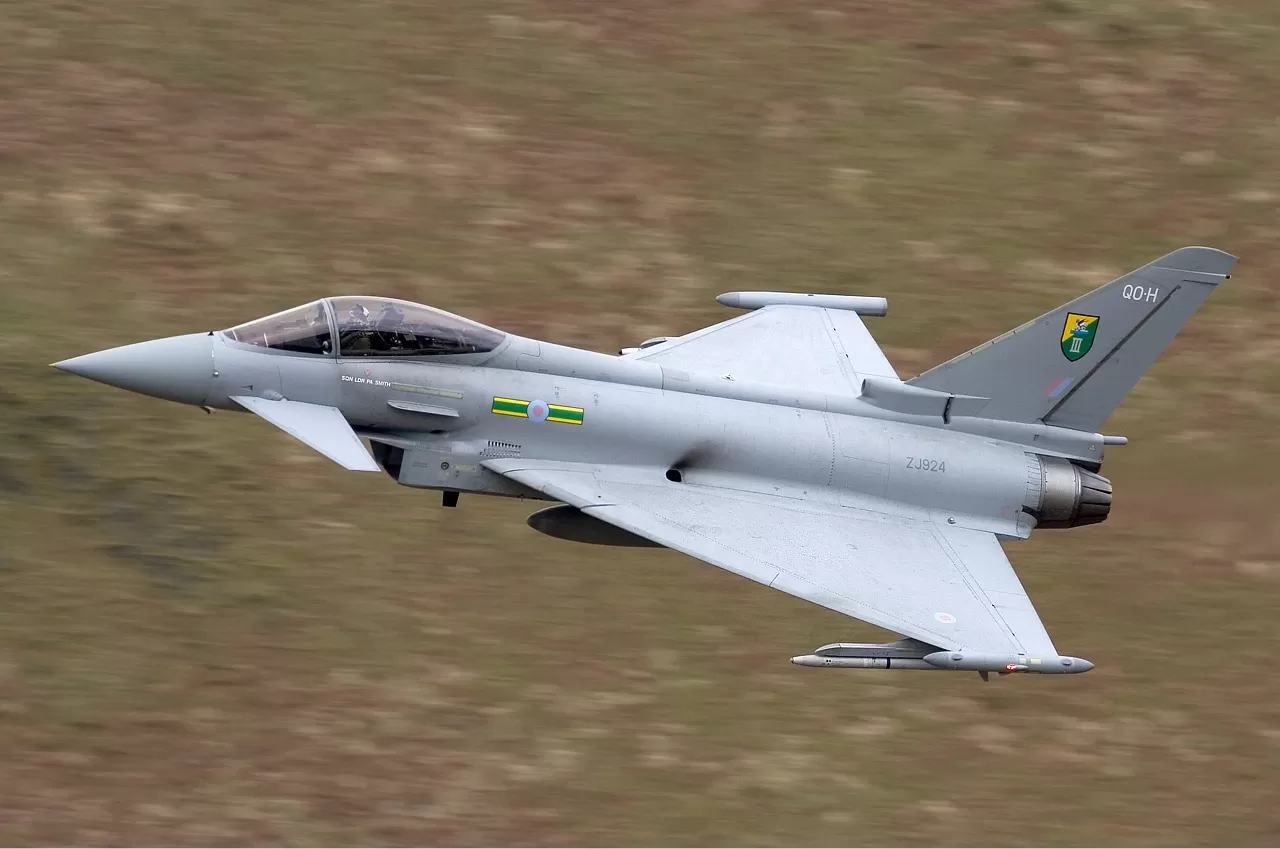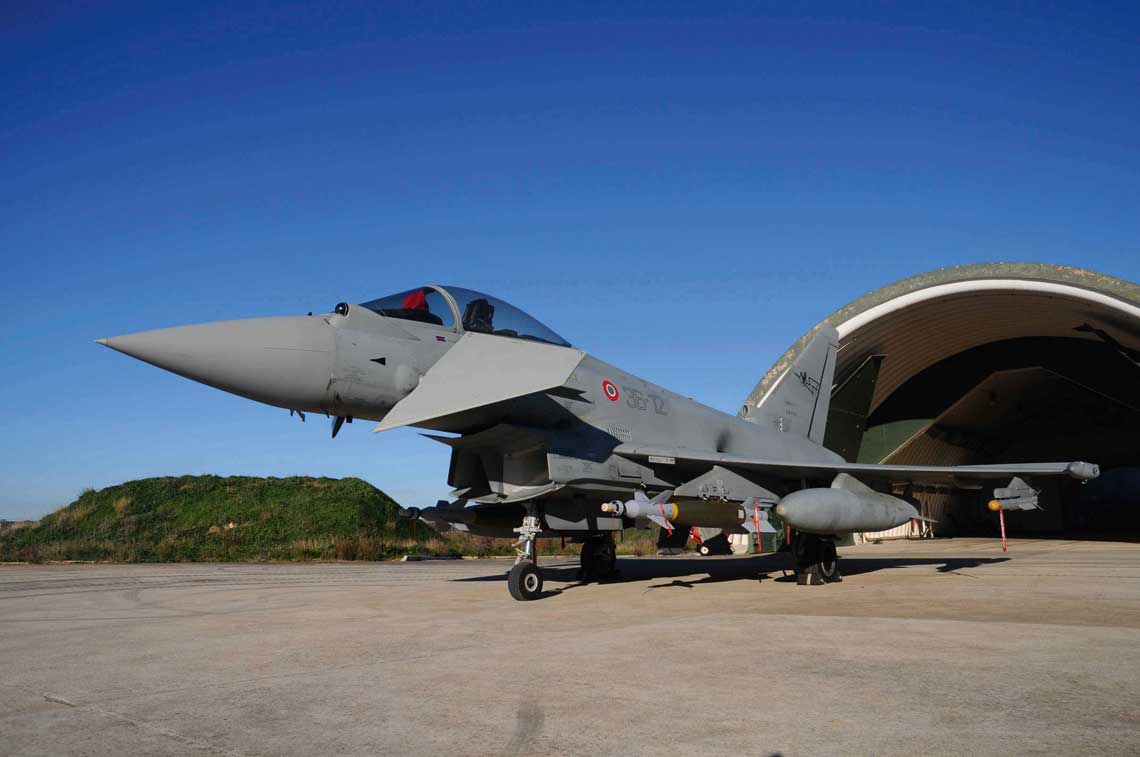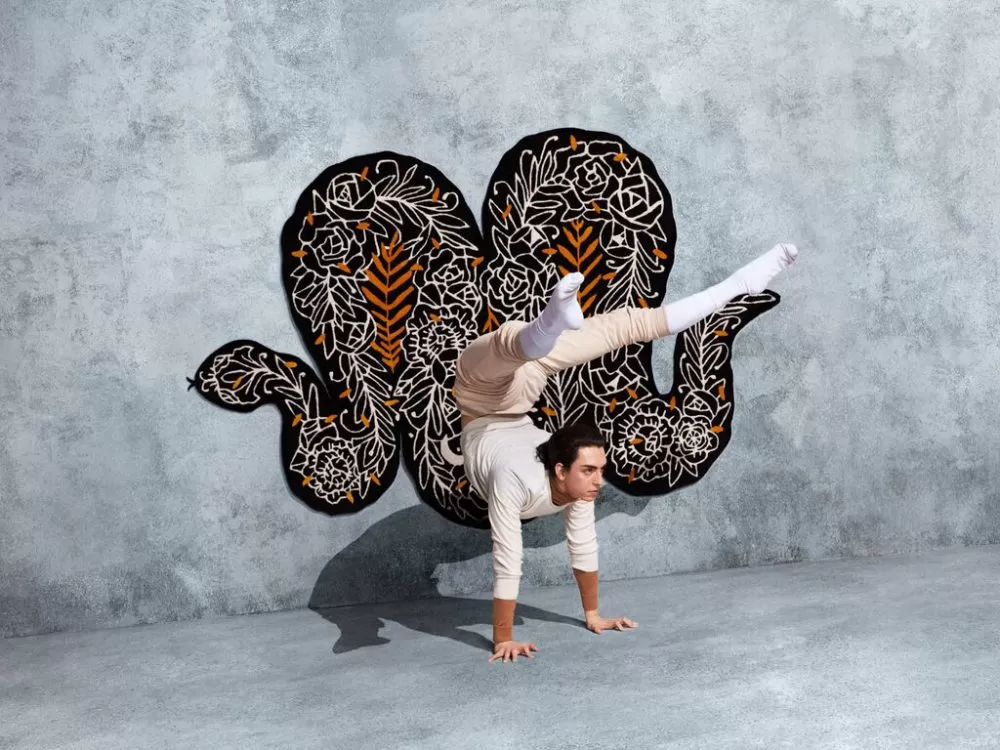
Eurofighter Typhoon

The Eurofighter combines very high maneuverability with advanced avionics, making it one of the most modern and efficient fighters in the world.
The European consortium Eurofighter wants to take part in the tender for the supply of a multi-role fighter (the “Harpia” program) for Poland, offering its Eurofighter Typhoon fighter. Competitive advantage must be secured by consortium, technology transfer and job creation in Poland.
The Eurofighter program is the largest European defense program in history. So far, nine users have ordered 623 fighters of this type, including: Saudi Arabia - 72, Austria - 15, Spain - 73, Qatar - 24, Kuwait - 28, Germany - 143, Oman - 12, Italy - 96 and the United States. Kingdom - 160. In addition, on March 9 this year, Saudi Arabia announced its intention to purchase an additional 48 Eurofighters, and further contracts are under negotiation.
The countries included in the Eurofighter GmbH consortium divided their shares in it as follows: Germany and the UK 33% each, Italy 21% and Spain 13%. The following companies were involved in direct work: Germany - DASA, later EADS; Great Britain - British Aerospace, later BAE Systems, Italy - Alenia Aeronautica and Spain - CASA SA. Following further industrial transformation, Airbus Defense and Space (ADS) acquired over 46% of the shares in Germany and Spain (with the national divisions of Airbus in Germany at 33% and Airbus in Spain at 13%), BAE Systems remained as a contractor in the UK, and BAE Systems in Italy , today it is Leonardo SpA
The main components of the airframe are manufactured at seven different factories. In the UK, the former English Electric plant at Samlesbury, later owned by BAe and BAE Systems, was sold in 2006 to American aircraft structural manufacturer Spirit AeroSystems, Inc. from Wichitia. The tail section of the fuselage is still manufactured here for half of the Eurofighters. The main Wharton plant, where the final assembly of Eurofighters for the UK and Saudi Arabia takes place, was also once owned by English Electric, and since 1960 by the British Aircraft Corporation, which merged with Hawker Siddeley in 1977 to form British Aerospace - today BAE Systems. Warton also manufactures forward fuselages, cockpit covers, empennage, back hump and vertical stabilizer, and inboard flaps. There were also three factories in Germany. Some components were manufactured at Aircraft Services Lemwerder (ASL) located in Lemwerder near Bremen, whose factories were formerly owned by Vereinigte Flugtechnische Werke (VFW) from Bremen, a company formed from the merger of Focke-Wulfa with Weserflug from Lemwerder. but in 2010 this enterprise was closed, and production was transferred to two other plants. The other is the plant in Augsburg, formerly owned by Messerschmitt AG, and since 1969 by Messerschmitt-Bölkow-Blohm. As a result of subsequent mergers, this plant was owned by DASA, later by EADS, and is now part of Airbus Defense and Space as a subsidiary of Premium AEROTEC. The main plant for the production of ADS is located in Manching between Munich and Nuremberg, where the final assembly of the German Eurofighter fighters takes place, fighters for Austria were also built here. Both German plants manufacture the central part of the fuselage, complete the hydraulic and electrical installations, as well as the control system.
In Italy, airframe structural elements are manufactured at two factories. The plant in Foggia belongs to the division of aviation structures - Divisione Aerostrutture. On the other hand, the plant in Turin, where the final assembly of the Eurofighters for Italy and the fighters for Kuwait takes place, belongs to the aviation division - Divisione Velivoli. These factories produce the rest of the rear fuselage, and for all machines: the left wing and flaps. In Spain, by contrast, only one factory, located in Getafe near Madrid, is engaged in the production of the main elements of the airframe. Here the final assembly of aircraft for Spain takes place, and in addition, right wings and slots are produced for all machines.
This is about the glider. But the production of the Eurofighter fighter also includes jointly developed and manufactured bypass gas turbine jet engines. To this end, the consortium EuroJet Turbo GmbH was established, headquartered in Hallbergmoos near Munich, Germany. Initially, it included the following companies from four partner countries: Rolls-Royce plc from Derby in the UK, Motoren- und Turbinen-Union GmbH (MTU) Aero Engines AG from Allah in the northwestern suburbs of Munich, Fiat Aviazione from Rivalta di Torino (on the outskirts of Turin) from Italy and Sener Aeronáutica from Spain. The latter company is currently represented in the Eurojet consortium by Industria de Turbo Propulsores (ITP), which is owned by Sener. The ITP plant is located in Zamudio in northern Spain. In turn, Fiat Aviazione in Italy was transformed into Avia SpA with the same plants in Rivalta di Torino, 72% owned by the financial holding Space2 SpA from Milan, and the remaining 28% by Leonardo SpA.
The engine that powers the Eurofighter, the EJ200, is also the result of a collaborative design effort. The distribution of the share in the costs, works and profits of individual countries is the same as in the case of the glider: Germany and Great Britain 33% each, Italy 21% and Spain 13%. The EJ200 has a three-stage, fully “enclosed” fan, i.e. each stage has an integral disc with blades and a five-stage low-pressure compressor on the other shaft, in which three stages are in the form of a “Close”. All compressor blades have a monocrystalline structure. One of the high pressure compressor rudders has a pitch control to control the flow against the pump. Both shafts, low and high pressure, are driven by single-stage turbines. The annular combustion chamber has a cooling and combustion control system. In the current version, the maximum engine thrust is 60 kN without afterburner and 90 kN with afterburner.
